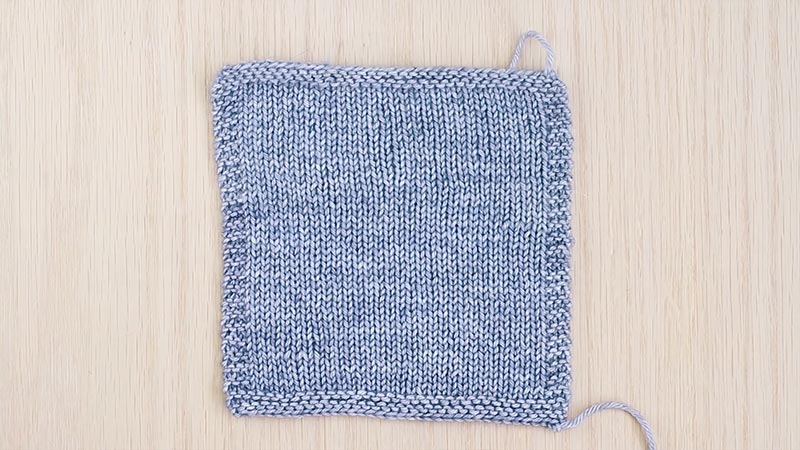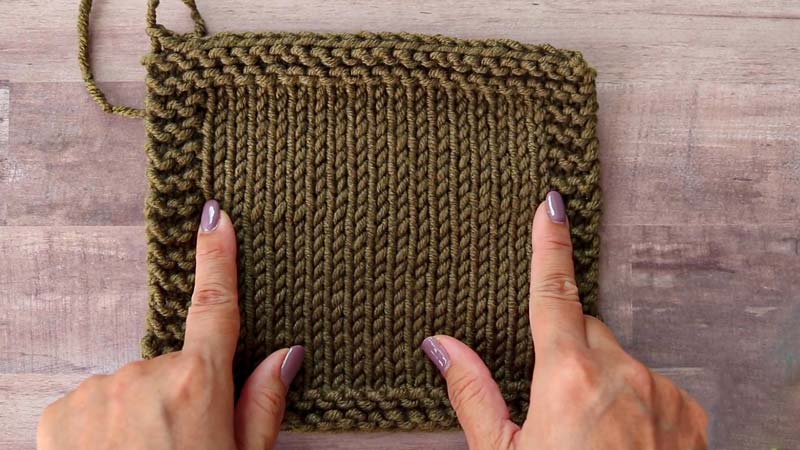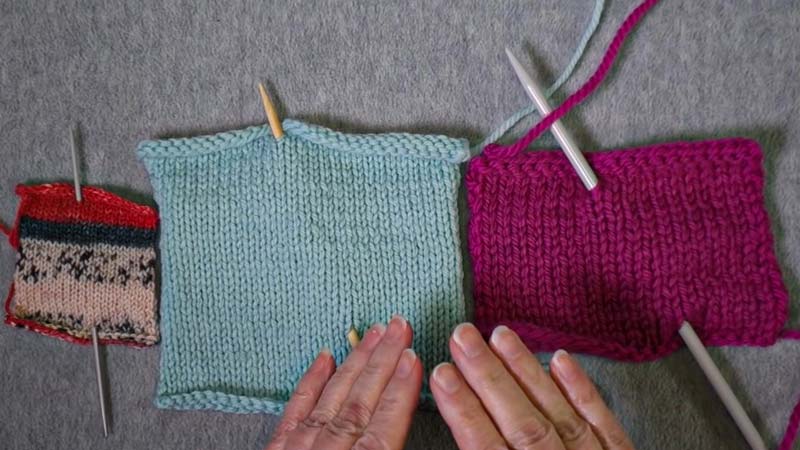In the intricate world of knitting, understanding the significance of gauge is paramount to the success of any project.
“What Does Gauge Mean in Knitting?” is a fundamental question that opens the door to precision and creativity in the hands of knitters.
Gauge, in knitting terminology, refers to the number of stitches and rows within a specified measurement, a critical factor that ensures the accuracy and fit of the final piece.
This metric serves as a guiding principle, allowing knitters to align their stitches with the intended dimensions outlined in a pattern.
Aspiring and seasoned knitters alike embark on a journey of swatching, experimenting with needle sizes, and fine-tuning techniques to master the elusive art of achieving the perfect gauge.

What Does Gauge Mean?
A gauge, in a broad sense, refers to a measuring device or instrument designed to quantify or assess the magnitude, dimension, or quantity of a particular attribute.
The term is commonly associated with instruments used to determine the thickness, size, or pressure of materials, such as a tire pressure gauge or a rain gauge.
It plays a crucial role in various fields, including engineering, manufacturing, and meteorology, providing a means to ensure precision and accuracy in measurements.
In a more figurative context, the term “gauge” can also be used to express an estimation or assessment of a situation or condition. For instance, individuals may gauge public opinion on a specific issue or gauge the level of success achieved in a project.
In essence, a gauge serves as a tool for measurement and evaluation, contributing to the understanding and control of diverse phenomena in both tangible and abstract realms.
What Does Gauge Mean In Knitting?
In the realm of knitting, gauge holds a pivotal role as a crucial element in determining the outcome and fit of a knitted project.
Knitting gauge refers to the number of stitches and rows within a specific measurement, typically presented as a square, achieved by a knitter using a particular yarn and needle size.
It serves as a standardized measure to ensure that the knitted piece matches the pattern’s intended dimensions.
Deviations in gauge can lead to variations in size, drape, and overall appearance of the finished project. Knitters often create a gauge swatch a small sample of knitting to assess their stitch and row count, enabling them to adjust their technique or switch to different needle sizes until the desired gauge is achieved.
Achieving the correct gauge in knitting is vital for ensuring the proper fit of garments and maintaining the integrity of the intended design.
This meticulous attention to gauge contributes to the success and satisfaction of knitters in bringing their creative projects to life.
How Do You Make A Gauge In Knitting?

Before delving into the various methods for creating a gauge in knitting, it’s essential to understand that a gauge ensures the accuracy and fit of your knitted project.
Achieving the correct number of stitches and rows per inch is crucial, and here are seven simple methods to help you master the art of gauging in knitting.
Swatch Creation
Begin by casting on more stitches than specified in the gauge instructions, then knit a few rows before transitioning to the main stitch pattern.
This simulates the pattern’s overall texture. Ensure the swatch is large enough to measure a few inches in both width and height.
Measuring the Center
After completing the swatch, measure the gauge from the center rather than the edges. Edges may be distorted due to the tension from casting on and binding off, providing a more accurate representation of your typical knitting style.
Blocking the Swatch
Wash and block your swatch according to the yarn’s care instructions. This mimics the effects of finishing your final project, providing a more accurate gauge measurement for the completed, blocked piece.
Pin Method
Use T-pins or blocking pins to secure your swatch on a flat surface, ensuring it lies flat and has no puckering. Measure the gauge within the pinned area, preventing distortion from the surrounding fabric.
Counting Rows
When measuring gauges vertically, count the rows within a specified measurement rather than relying solely on stitches. This accounts for variations in tension that might affect both width and height.
Multiple Swatches
If you’re using different stitch patterns throughout your project, create multiple swatches for each pattern. This provides a more accurate representation of how your gauge might vary across the entire piece.
Use the Right Needles
Experiment with different needle sizes to achieve the correct gauge. If you have too many stitches per inch, try a larger needle; if you have too few, switch to a smaller one. Finding the right combination of yarn and needles is key to achieving the intended gauge.
Remember, patience and precision are essential in mastering gauge in knitting, ensuring your finished project matches the pattern’s specifications.
What Size Is Idle For A Knitting Gauge?
Selecting the appropriate needle size for your knitting gauge is a crucial step in achieving the desired measurements for your project. The needle size influences the number of stitches and rows per inch, impacting the overall size and appearance of your knitted piece.
Here are five common needle sizes to consider for achieving an optimal knitting gauge:
Standard Needle Size

Begin with the needle size recommended on the yarn label or the pattern instructions. This is the starting point to gauge accuracy, as it aligns with the yarn’s intended thickness and the designer’s specifications.
Size Up for Loose Gauge
If your initial swatch yields more stitches per inch than specified, consider switching to a larger needle size. Larger needles create looser stitches, helping you reach the required gauge by allowing the yarn to drape more generously.
Size Down for Tight Gauge
Conversely, if your swatch indicates fewer stitches per inch, switch to a smaller needle size. Smaller needles tighten the stitches, reducing the overall width and ensuring that you meet the recommended gauge for a snugger fit.
Adjust for Personal Tension
Take into account your knitting tension. If you naturally knit more tightly, even with the recommended needle size, try going up a size to achieve the correct gauge. Conversely, if you knit loosely, consider using a smaller needle.
Use a Range of Sizes
Sometimes, achieving the perfect gauge may involve experimenting with a range of needle sizes. Create swatches using needles slightly larger and smaller than the recommended size to find the one that produces the most accurate and visually appealing results for your project.
Remember that finding the right needle size is a dynamic process influenced by factors such as yarn type, stitch pattern, and personal knitting style.
By adjusting your needle size strategically, you can attain the ideal gauge, ensuring your knitted project matches the intended dimensions and design.
FAQs
How do I measure the knitting gauge?
To measure the gauge, knit a swatch using the recommended yarn and needle size. Count the stitches and rows within a specified measurement, ensuring accuracy by blocking the swatch as you would the final project.
What happens if my gauge is off?
Deviations in gauge can result in a project that is too large, too small, or misshapen. Achieving the correct gauge is crucial for ensuring a well-fitted and visually pleasing finished piece.
Can I use a different yarn for my project if the gauge matches?
While matching gauges is important, using a different yarn may affect the overall look and feel of the project. It’s advisable to choose a yarn that not only matches the gauge but also complements the pattern’s texture and drape.
How do I adjust my gauge if it’s not accurate?
Experiment with different needle sizes. If you have too many stitches per inch, try larger needles, and vice versa. Additionally, pay attention to your tension and adjust your knitting style to achieve the desired gauge.
Is the knitting gauge only important for garments?
No, gauge is essential for any knitted project, not just garments. Whether you’re creating accessories, home decor, or toys, achieving the correct gauge ensures that your finished piece meets the intended size and design specifications outlined in the pattern.
Conclusion
The question of “What Does Gauge Mean in Knitting?” unveils the nuanced world where creativity meets precision.
The importance of gauge transcends mere technicality, becoming a linchpin in the seamless translation of artistic vision into tangible, well-fitted creations.
It is a meticulous dance between yarn, needles, and skill, ensuring the harmony of stitches in every knitted masterpiece.
Knitters navigate this realm with patience and dedication, understanding that the correct gauge is not just a measurement but a key to unlocking the true potential of their craft.
As needles click and yarns intertwine, the mastery of gauge in knitting becomes a testament to the artistry and craftsmanship that define this timeless and beloved fiber art.
Leave a Reply